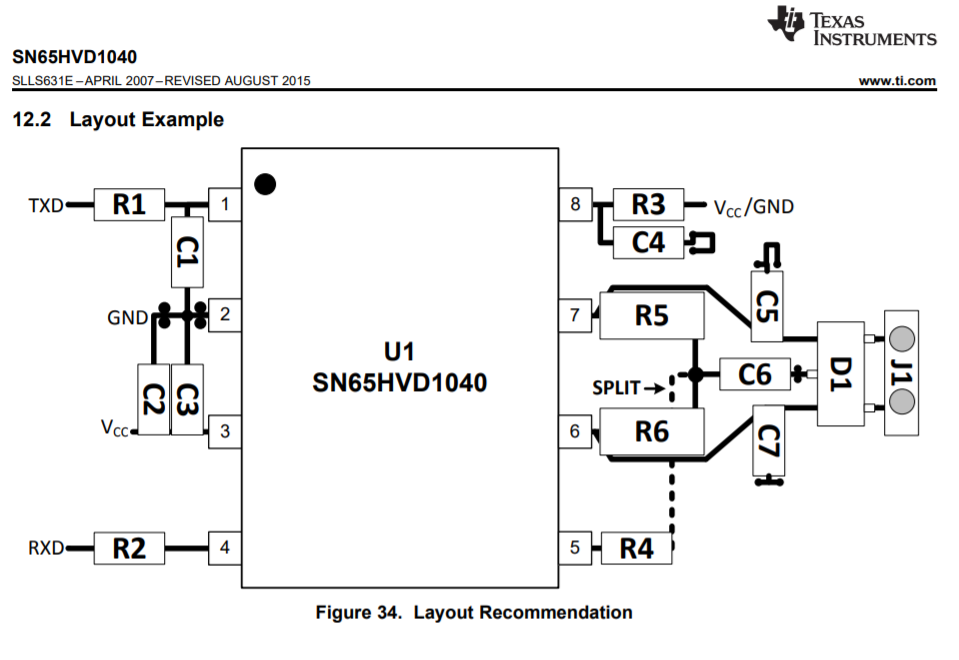Hello,
In the d/s's layout recommendation, there is a diagram as below:
1. Could you offer the circuitry to match below layout/
2. What're the recommended values of the R1, R2, C1, C2?
3. Why both C2 and C3 are connected together from below diagram? Is there anything mistake?
4. I saw some of RS485 circuitry adding a common chock on the output of the RS485 CANH & CANL. What's the purpose?
5. When adding a common chock on the circuit, how to place the TVS? it's located at between RS485 IC and CM chock, correct?
6. Is D1 TVS component?


